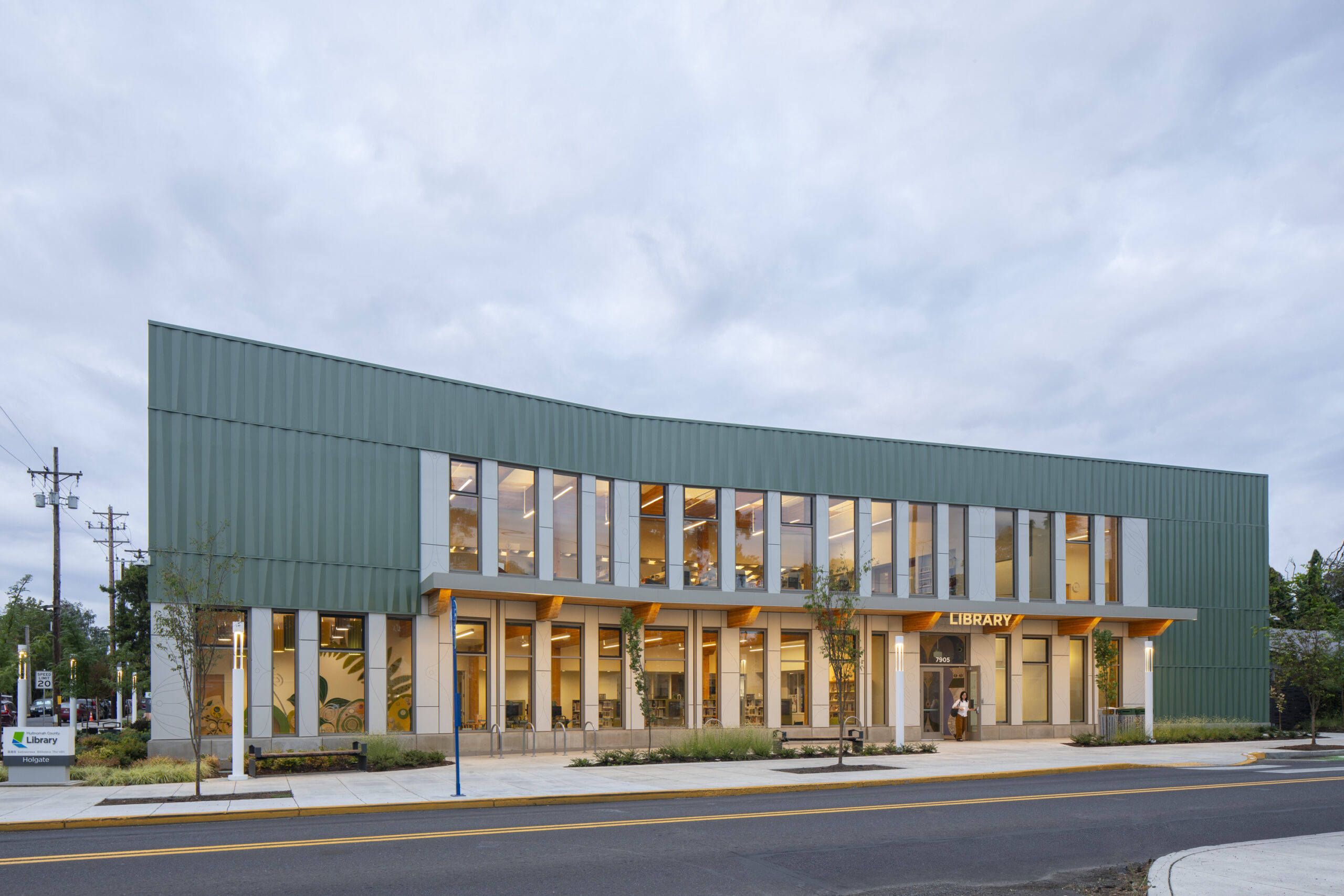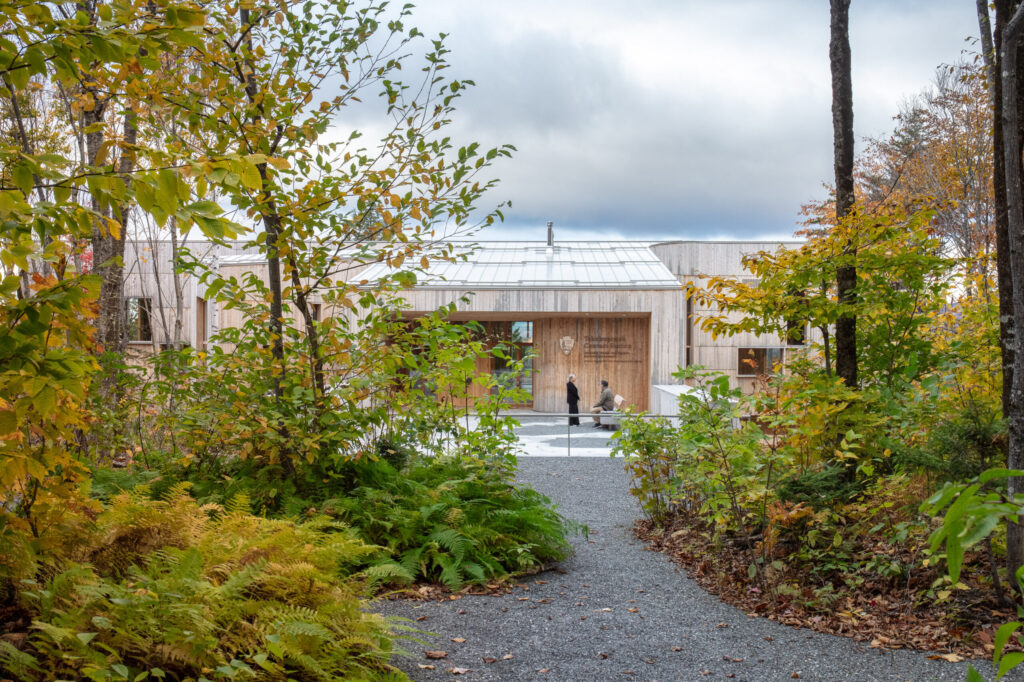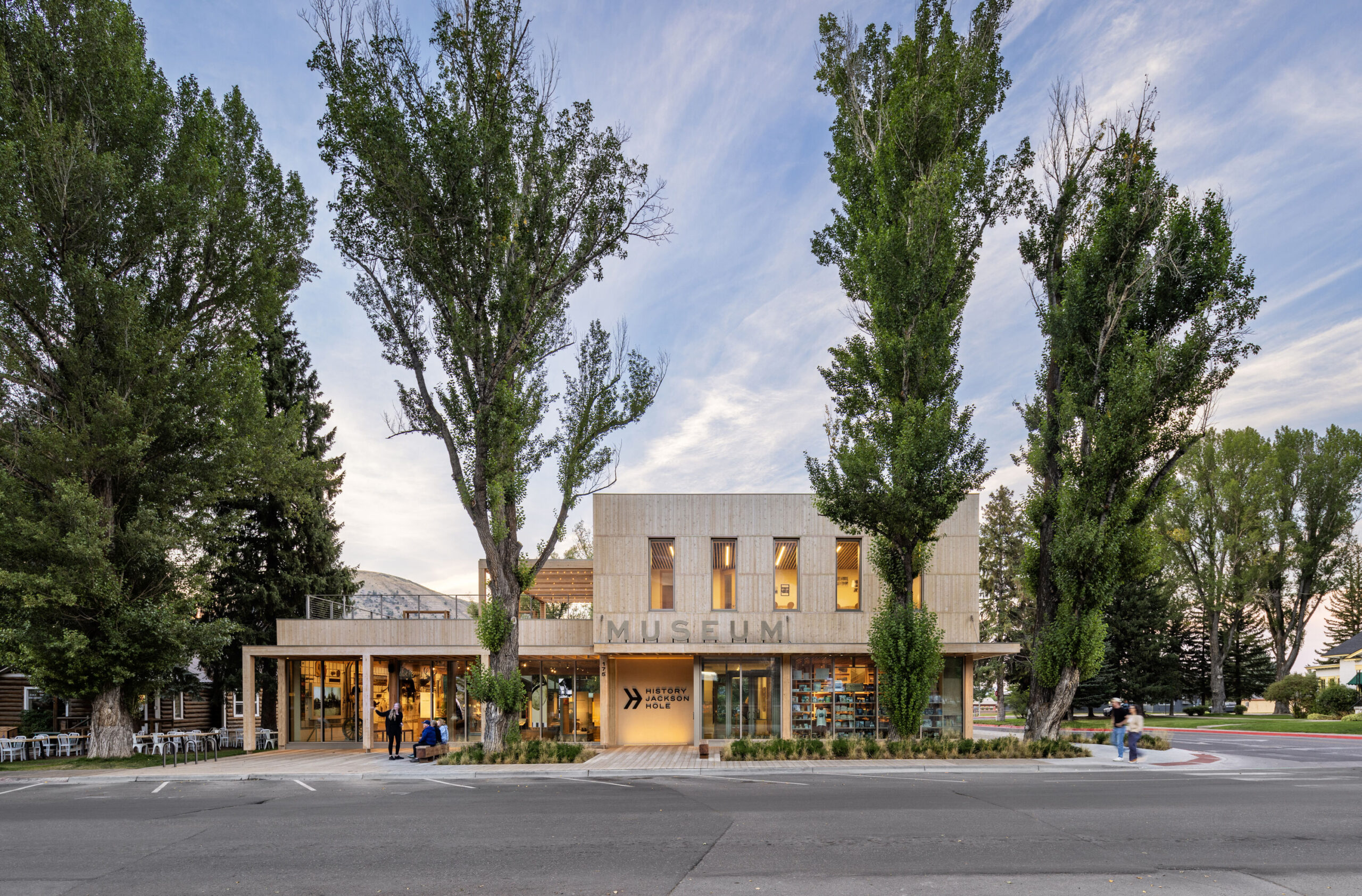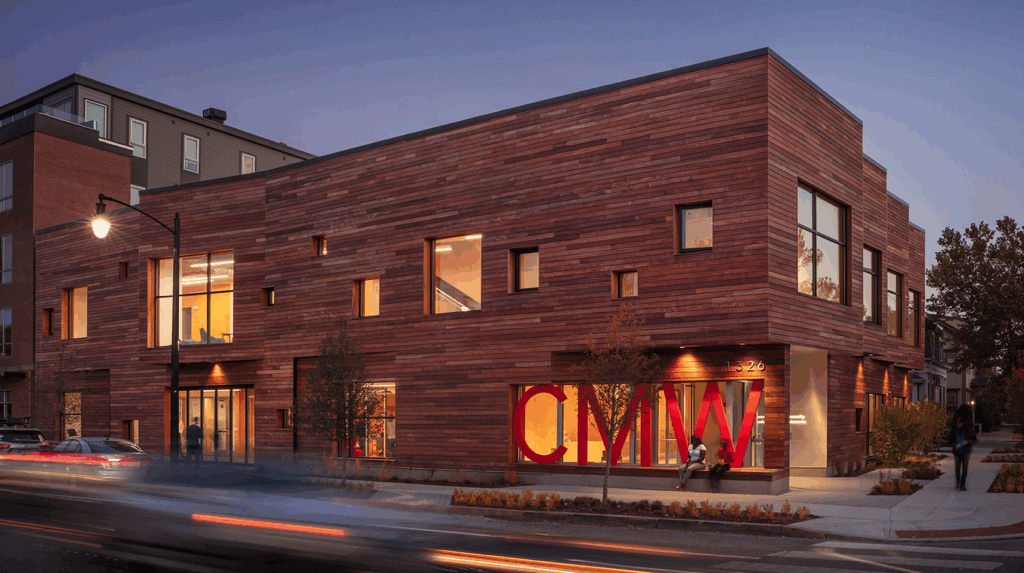Civic Community, Mass Timber
Portland International Jetport
Wood: Cleared for takeoff
The Portland International Jetport’s context-sensitive design supports Maine’s storied brand by incorporating symbols of the state’s magnificent woodland beauty. The 40,000 sq ft ceiling – an array of southern pine glulam girders, beams, purlins, and a roof deck of tongue-in-groove planks supported by massive metal-seated tree columns – is the airport’s signature design element. Glulam was chosen because it has greater strength and stiffness than comparable dimensional lumber.

The owner’s challenge was direct: A blindfolded airline passenger coming off the jet bridge should be able to remove his or her blindfold and instantly know they’re in Maine.
“Wood was selected for many reasons in order to accomplish this goal,” says Gensler architect Jim Stanislaski, AIA, LEED AP. The Gensler Washington D.C. office embraced a contextsensitive design approach. “We wanted the terminal to represent the surrounding location,” Stanislaski explains. “There is a real tactile and visual warmth to wood that we liked. Creating an atmosphere where people can connect with the natural environment, a biophilia dimension, is a major advantage in designing with wood.”
The 40,000-square foot ceiling of the jetport— an arrary of southern pine glulam girders, beams, purlins, and a roof deck of tongue-in-groove planks supported by massive metal-seated tree columns—is the airport’s signature design element. Glulam (glued laminated timber) was chosen because it has greater strength and stiffness than comparable dimensional lumber. That’s why glulam beams can span long distances with minimal need for intermediate supports.
Glulam’s inherent strength offers designers nearly unlimited design flexibility when specifying long spans and distances for an airport terminal or other commercial or non-residential applications.
“We could have selected a substitute product that looked like wood, but it was important to the design team that we maintain the authenticity of wood,” Stanislaski says. Southern pine was selected for its denser, more robust physical characteristics. Gensler also applied a similar design approach for the Jackson Hole Airport, another awardwinning design that dramatically integrates wood in an airport terminal setting. “You expect to see wood in smaller airports like Aspen or Nantucket. The scale in Portland is unique and unexpected,” Stanislaski observes.
“Wood is a major design consideration for the reasons I’ve mentioned. But wood also lowers the carbon footprint, it’s renewable, recyclable, and can be repurposed from other structures.”

Project Details
- Architect
- Gensler
- Contractor
- Turner Construction Company
- Date Completed
- 2011
- Location
- Portland, Maine
- Structural Engineer
- OEST Associates, Inc.
- Timber Engineer
- DeStefano & Chamberlain Inc.






